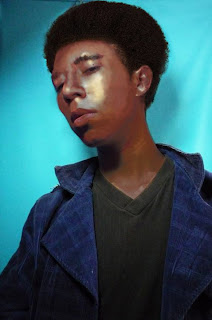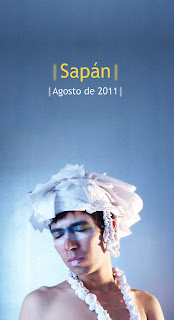tatiana de la tierraSometimes, things happen because they were destined to, even if you don’t realize it at the moment. Like today. I was hanging out on Facebook and clicked on a headline posted by a friend: “Estudiante UN gana concurso de novela de la Cámara de Comercio.” I read a few paragraphs about a fine arts student from the Universidad Nacional in Bogotá who won a creative writing contest with his experimental novel. Bogotá Vagabundo is a romantic science fiction tale about a 19-year old who falls in love with another man out in the planet of Uranus. Intriguing, I think, but what stands out is that this young university student has written13 novels. I, on the other hand, have not written even one.
Driven by envy and curiosity, I look for him on Facebook. Seconds later, I have a new friend, Luis Barragán. We chat and I waste no time before asking him to send me a story or something, anything, of his. He obliges with “Mujeres ornitófilas que amé,” a short story about a guy who ends up in bed with a woman who has a flower blooming between her legs. This is not a metaphor-type of flower. It’s an actual flower that attracts insects, bees and birds. The story is kinky, creative and cool. I am smitten and, minutes later, we have ditched Facebook for Skype.
We decide to have a conversation between us as writers. But first I have to ask him about his profile picture in Facebook. It is of a black man with an afro. But he didn’t look brown in the article I read about him. “Is that you?” I ask. “Are you black? “ 
“No, I’m mestizo. I am black, white and indigenous. But that is a version of me, a browner version of me. I wish my skin were darker, that’s true. It’s like an upside down version of Michael Jackson. The way he changed skin color, I saw that as going from an oppressed race to the oppressing race. I thought it would be interesting to do the opposite. But more than that, it’s a way to shift ways of thinking. Especially those that culturally represent race and gender.” I notice other Photoshopped images, such as one in which he looks Asian, and another that emphasizes light skin.
This writer-creature before me is twirling my curls with his words. What about transgender? I ask. I remember that the friend we have in common in trans. “Well, people may think that a female-to-male trans goes from the oppressed gender to the oppressor gender, but those structures melt in the act of transing. What I’ve learned from my trans friends is that cultural limits disappear in being a man, woman, or intersex. It doesn’t matt
Viewing: Blog Posts Tagged with: Colombian writers, Most Recent at Top [Help]
Results 1 - 2 of 2
Blog: La Bloga (Login to Add to MyJacketFlap)
JacketFlap tags: tatiana de la tierra, Colombian writers, Luis Barragan, Add a tag
Blog: La Bloga (Login to Add to MyJacketFlap)
JacketFlap tags: immigrants, independence day, Colombia, Colombian writers, Add a tag
by tatiana de la tierra
I just came home from a 4th of July barbecue in Glendale, California. Sipping on a mojito, I looked around and noted that, out of around 25 people, only three were born in the U.S. with direct roots in this country. The others born here are of Mexican descent. And then there were those of us born elsewhere--El Salvador, Cuba, Colombia, Ecuador, Mexico, and New Zealand. This is the U.S. I know, an international bilingual brew. To commemorate the red-white-and-blue, I dedicate today's bloga to all of us immigrants. We each have our story of getting here. This is mine.
"Wings" was originally published in Without a Net: The Female Experience of Growing Up Working Class. Ed. Michelle Tea. Emeryville: Seal Press, 2004.
Placing a pink feather headband in my hand, my Abuelita Blanca kissed me good-bye, crying. I cried, too. I didn’t know why. The perpetually gray Bogotá skies joined in, sprinkling us with cold rain. I ran up the narrow metal staircase as wind bit my wet cheeks, into an airplane that would take me and my family far from Colombia. It was 1968 in May and I had just turned seven years old.
Thick, warm Atlantic air greeted us as we clambered, wide-eyed, out of our metal cocoon. The air in Miami was nothing like the air I knew in the Andean mountains. But being yanked from the love and protection of my aunts, grandmothers and great aunts was the most momentous change. It was bigger than air itself. I walked to the market with them, chit-chatted on the sidewalk, made corn arepas at the crack of dawn, collected eggs in the morning, accompanied them in the evening for hot chocolate. They cooked for me, bought dresses for me, introduced me to all their friends. But in Miami, everybody was a stranger.
At the airport I played with stairs that moved and doors that opened magically. A strange twig of a man who wore ripped denim and spoke halting Spanish greeted us. “Yo aquí para ayudarte,” he said, offering a warm handshake. Harvey was a friend of a friend of my dad’s; they embraced as if they already knew each other. My mom looked at him cautiously through her reddened eyes. Finally, she extended her hand.
Everything seemed brand new and shiny those first few days. All the blades of grass were uniformly green and stood properly on plush manicured lawns. The clean-shaven policemen wore immaculate starched uniforms and drove sleek cars crowned with blue and red domes that sometimes flashed and made wailing noises. Neat rows of containers housing exotic foods filled the spotless stores, where clerks counted crisp bills over Formica counters and gave back the change without stealing. Exquisite paintings graced cereal boxes and cans of soup, and luminous rays emanated from curvy Coca-Cola bottles branded with fire-red labels.
My father took me to a 7-11, where I marveled at the cans decorated with vivid color images of the foods they contained.
“This one, Papi,” I said. We both scrutinized the can. It had a picture of reddish brown beans on the label. Beans, a mainstay of our diet, had to be soaked in water the night before and took hours to cook. Yet there they were in the palms of our hands, ready to eat. We went home with the can. My father opened it and heated up the beans with some rice. I could tell they were different; they were watery and didn’t smell right. Still, I brought a spoonful to my mouth. I gagged as the flavor hit my palette. They were sweet. Beans were supposed to be salty and spiced with onions, garlic, tomato, and peppers. They were supposed to be thickened with green plantains. They were not supposed to be sweet or watery.
My mom, who disliked cooking and had little time for it, took advantage of the cheap and instant foods. She went grocery shopping and came home with Kool Aid, white bread, processed cheese, frozen chicken pot pies, sugar-coated cereals, and Hamburger Helper. The Colombian foods I was accustomed to—fresh bl


